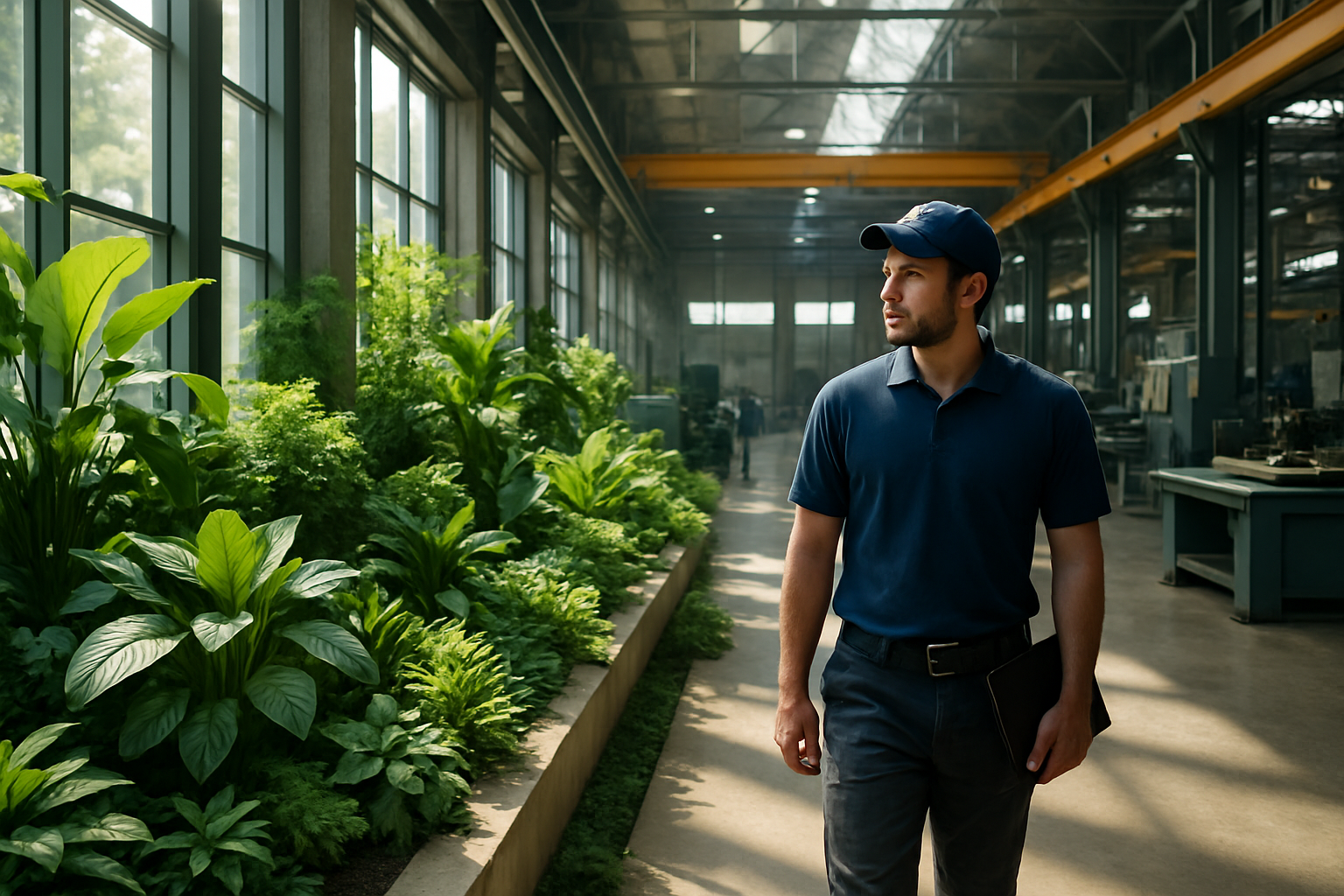Biophilic Design in Industrial Spaces
Reimagining factory floors and warehouses with nature-inspired elements is revolutionizing industrial environments. Biophilic design, long championed in office spaces, is now making waves in manufacturing and logistics sectors. This innovative approach marries productivity with employee well-being, challenging traditional notions of industrial aesthetics and functionality.

Origins and Evolution of Biophilic Design
Biophilic design draws its roots from the concept of biophilia, introduced by psychoanalyst Erich Fromm in the 1960s and later popularized by biologist Edward O. Wilson. The term describes humans’ innate affinity for nature and living systems. In the context of architecture and design, biophilic principles began to gain traction in the 1980s, primarily in office and residential spaces.
Initially, the industrial sector was slow to adopt these nature-inspired design elements, largely due to perceived incompatibility with operational requirements and safety regulations. However, as research increasingly demonstrated the positive impacts of biophilic design on human health, productivity, and well-being, forward-thinking industrial leaders began to explore its application in their facilities.
Key Elements of Biophilic Design in Industrial Settings
Implementing biophilic design in industrial spaces requires a thoughtful approach that balances natural elements with functional necessities. Key components include:
-
Natural lighting: Maximizing daylight through strategic placement of windows, skylights, and light tubes.
-
Indoor vegetation: Incorporating living walls, potted plants, and even small indoor gardens in break areas or along walkways.
-
Natural materials: Using wood, stone, and other organic materials in construction and interior finishes where feasible.
-
Biomorphic forms and patterns: Integrating nature-inspired shapes and designs in structural elements and equipment layouts.
-
Visual connections to nature: Creating sightlines to outdoor green spaces or incorporating nature-themed artwork and imagery.
Benefits for Industrial Operations
The implementation of biophilic design in industrial settings yields numerous advantages:
-
Enhanced worker productivity: Studies show that exposure to natural elements can increase focus and cognitive function, potentially leading to improved output and reduced errors.
-
Reduced absenteeism: Biophilic environments have been linked to lower stress levels and improved overall health, which can decrease sick days and turnover rates.
-
Improved safety: Better lighting conditions and more engaging environments can enhance alertness and reduce accident rates.
-
Energy efficiency: Intelligent use of natural light and vegetation can contribute to better temperature regulation and reduced energy consumption.
-
Brand image enhancement: Adopting biophilic design demonstrates a company’s commitment to employee well-being and environmental stewardship, potentially attracting top talent and environmentally conscious customers.
Challenges and Considerations
While the benefits are compelling, implementing biophilic design in industrial spaces comes with unique challenges:
-
Regulatory compliance: Ensuring that natural elements do not interfere with safety regulations or hygiene standards, particularly in sectors like food processing or pharmaceutical manufacturing.
-
Maintenance requirements: Living elements like plants and water features require ongoing care, necessitating additional resources and expertise.
-
Initial costs: The upfront investment for redesigning existing spaces or incorporating biophilic elements in new constructions can be significant.
-
Operational disruption: Retrofitting existing facilities may temporarily impact production schedules.
-
Balancing aesthetics with functionality: Ensuring that design elements do not impede workflow or equipment accessibility.
Case Studies: Successful Implementations
Several companies have successfully integrated biophilic design into their industrial spaces:
-
A leading automotive manufacturer in Germany incorporated a living wall and extensive natural lighting in its assembly plant, reporting a 15% increase in productivity and a 12% decrease in quality defects within the first year.
-
A pharmaceutical company in Switzerland redesigned its research and production facility to include indoor gardens and nature-inspired break areas, resulting in a 23% reduction in employee sick days and a notable improvement in job satisfaction scores.
-
A logistics center in the Netherlands implemented a green roof and strategically placed skylights, leading to a 20% reduction in energy costs and improved thermal comfort for workers.
Practical Implementation Strategies
• Start small: Begin with pilot areas to test different biophilic elements and gather data on their impact.
• Prioritize high-traffic areas: Focus initially on spaces where workers spend the most time, such as assembly lines or packing stations.
• Involve employees: Conduct surveys and workshops to understand worker preferences and concerns regarding biophilic design.
• Collaborate with experts: Partner with biophilic design specialists and industrial engineers to create tailored solutions.
• Monitor and adjust: Implement robust measurement systems to track the impact on productivity, safety, and employee well-being.
As industrial spaces continue to evolve, biophilic design stands out as a powerful tool for creating more humane, efficient, and sustainable work environments. By thoughtfully integrating natural elements into factories and warehouses, companies can foster a workplace that not only enhances productivity but also prioritizes employee well-being and environmental consciousness. As more success stories emerge, biophilic design is poised to become a standard consideration in industrial architecture and operations management, marking a significant shift towards more holistic and human-centric industrial practices.





